In today’s fast-paced business environment, the management of intellectual property (IP) workflows has become increasingly critical. Organizations need to navigate complex regulations, protect their innovations, and efficiently manage their IP assets. Streamlining IP workflows can lead to significant advantages, allowing companies to operate more effectively and remain competitive. This article delves into various aspects of IP workflows, including their fundamentals, challenges, strategies for improvement, and the role of tools in optimizing these processes.
Understanding IP Workflows
IP workflows encompass the processes and activities involved in managing intellectual properties, from creation to protection and commercialization. These workflows typically involve multiple stages, including invention disclosures, patent applications, trademark registrations, and monitoring IP rights. Understanding these workflows is essential for any organization looking to manage its IP effectively.
The Basics of IP Workflows
The backbone of IP workflows lies in their structured nature. Initially, an idea may arise within a research team or an individual inventor’s mind. As the idea matures, it goes through several crucial stages:
- Invention Disclosure: Documenting the invention’s details and assessing its applicability.
- Patent Filing: Preparing and submitting a patent application to secure legal protection.
- Commercialization: Developing strategies to market and monetize the intellectual property.
These stages often involve collaboration between various departments, including legal, R&D, and marketing. Understanding the interplay between these elements is essential for successful IP management. Each department brings unique insights and expertise to the table; for instance, the legal team ensures that all filings comply with regulations, while R&D provides the technical details necessary for a robust application. This collaborative effort not only enhances the quality of the submissions but also fosters a culture of innovation within the organization.
The Importance of Efficient IP Workflows
Efficient IP workflows play a vital role in ensuring that organizations can protect their innovations promptly. A streamlined process minimizes the risk of missing critical deadlines, which can lead to the loss of IP rights or hinder market competitiveness. Moreover, having an efficient workflow helps to allocate resources effectively, ensuring that the most promising inventions receive attention.
Time savings gained from streamlined processes can translate into financial savings as well. By reducing the time to market for new products and innovations, companies can capitalize on opportunities faster than their competitors. Additionally, a well-structured IP workflow can enhance the organization’s ability to respond to market changes and consumer demands, allowing for agile adjustments in strategy. For instance, if a competitor launches a similar product, a company with an efficient IP workflow can quickly assess its IP portfolio and take necessary actions, such as enforcing patents or adjusting marketing strategies, to maintain its competitive edge.
The Challenges in IP Workflow Management
Despite the importance of efficient IP workflows, organizations face several challenges that can obstruct the smooth management of intellectual property. Understanding these hurdles is crucial for devising effective solutions.
Identifying Common Bottlenecks
One of the most significant barriers to efficient IP workflows is the presence of bottlenecks. These can manifest in various forms:
- Administrative delays in processing disclosures and applications.
- Lack of communication between departments can lead to overlapping efforts.
- Slow response times from external stakeholders or legal counsel.
Identifying these bottlenecks is the first step in developing effective strategies to address them. For instance, organizations can implement regular cross-departmental meetings to foster better communication and collaboration. By encouraging teams to share their progress and challenges, potential overlaps can be minimized, and a more cohesive workflow can be established. Additionally, utilizing project management tools can help track the status of applications and disclosures, allowing for quicker identification of delays and more proactive management of tasks.
Overcoming Technical Difficulties
Technical difficulties can also pose a significant challenge to managing IP workflows. Organizations may struggle with outdated systems or software that do not support seamless collaboration and data sharing. Additionally, the complexity of IP laws and regulations can create confusion, leading to inefficiencies. Addressing these technical challenges often requires investment in modern systems and continuous training of personnel.
Furthermore, integrating new technologies into existing workflows can be met with resistance, particularly if employees are accustomed to traditional processes. Change management strategies must be employed to ensure a smooth transition. This could include providing comprehensive training sessions that not only cover the technical aspects of new tools but also highlight their benefits in improving daily tasks. Engaging employees early in the process and soliciting their feedback can also help ease the transition, as they may offer valuable insights into how the new systems can better serve their needs. Ultimately, fostering a culture of adaptability and continuous learning can mitigate resistance and enhance overall workflow efficiency.
Strategies for Streamlining IP Workflows
To enhance workflow efficiency, organizations can implement several strategies tailored to their unique needs and challenges.
Implementing Automation in IP Workflows
Automation stands as one of the most effective strategies for streamlining IP workflows. By automating repetitive tasks, organizations can save time and reduce the risk of human error. For instance, automated reminders for significant deadlines, such as filing dates or renewal reminders, can keep teams informed and prepared.
Additionally, the use of automated reporting tools can provide real-time analytics on workflow progress, helping managers make informed decisions about resource allocation and project prioritization. This data-driven approach not only enhances accountability but also allows for proactive adjustments to be made when bottlenecks are identified, ensuring that projects stay on track and within budget.
Leveraging Technology for Efficiency
Incorporating cutting-edge technology is essential for improving IP workflows. Cloud-based platforms, for example, can enhance collaboration by allowing team members to access and share information in real time, regardless of their geographic location. Moreover, advanced IP management software can streamline administration tasks, document tracking, and compliance monitoring.
Investing in training and development for staff to utilize these technologies fully can yield significant benefits. Educating employees on best practices for using IP management tools fosters a culture of efficiency. Furthermore, integrating artificial intelligence into these systems can provide predictive analytics, enabling organizations to anticipate potential challenges and address them proactively. This forward-thinking approach not only optimizes current workflows but also prepares teams for future innovations in the IP landscape.
The Role of IP Workflow Tools
Specialized tools play a crucial role in managing IP workflows effectively. These tools can simplify complex processes and enhance collaboration across departments. By streamlining tasks such as patent filing, trademark registration, and licensing agreements, organizations can significantly reduce the time and resources spent on intellectual property management. In an increasingly competitive landscape, the ability to efficiently handle IP matters can provide a substantial advantage, allowing companies to focus on innovation and market growth.
Selecting the Right IP Workflow Tools
Choosing the appropriate IP workflow tools depends on various factors, including the organization’s size, the complexity of its IP portfolio, and specific business needs. Companies should consider features such as:
- Document management capabilities to store and retrieve files easily.
- Collaboration features to facilitate communication among stakeholders.
- Customizable reporting options to track key metrics and performance indicators.
By selecting tools that align with organizational priorities, companies can accelerate their IP processes and enhance overall efficiency. Furthermore, it is essential to evaluate the scalability of these tools; as a company grows, its IP management needs may evolve, necessitating tools that can adapt to increased complexity and volume. Engaging with vendors who offer robust support and training can also ensure a smoother transition and more effective utilization of the tools.
Maximizing the Benefits of IP Workflow Tools
Once the right tools have been implemented, maximizing their benefits requires continuous evaluation and adaptation. Regular training sessions can help users stay updated on new features and best practices. Additionally, gathering feedback from all stakeholders can provide insights into areas needing improvement.
Adopting an integrated approach where feedback is actively sought and addressed allows organizations to refine their workflows continually. This commitment to improvement can yield substantial long-term benefits. Moreover, leveraging analytics from these tools can provide valuable insights into workflow efficiency and bottlenecks, enabling data-driven decisions to enhance processes further. By fostering a culture of continuous improvement and open communication, organizations can ensure that their IP workflow tools not only meet current needs but also anticipate future challenges in the dynamic landscape of intellectual property management.
Measuring the Success of Streamlined IP Workflows
To understand the effectiveness of IP workflow improvements, organizations must establish clear metrics. Measuring success allows businesses to make data-driven decisions about their processes. By quantifying the impact of these improvements, companies can not only justify investments in technology and personnel but also foster a culture of accountability and transparency within their teams.

Key Performance Indicators for IP Workflows
Several key performance indicators (KPIs) can provide insight into the effectiveness of IP workflows, including:
- Time taken from invention disclosure to patent filing.
- Number of applications filed per year relative to targets.
- Percentage of successful applications granted versus submitted.
Monitoring these KPIs helps companies evaluate their progress and identify areas for further enhancement. Additionally, organizations may consider tracking the cost per application, the average time for each stage of the workflow, and the rate of renewal for patents. These metrics can reveal trends over time and highlight the return on investment for IP-related initiatives, enabling a more comprehensive understanding of the workflow’s overall health.
Continuous Improvement in IP Workflow Management
Continuous improvement must be an ongoing goal in IP workflow management. Organizations should establish regular reviews of their processes, incorporating feedback from all team members. This practice allows businesses to stay responsive to changing environments and make necessary adjustments proactively. Engaging cross-functional teams in these discussions can also lead to innovative solutions that might not have been considered in siloed environments.
Furthermore, considering industry best practices and adapting them to the organization can drive innovation and efficiency in IP workflows, positioning the company for sustained success. Leveraging technology, such as automated tracking systems and collaborative platforms, can streamline communication and reduce bottlenecks. By fostering an environment where continuous learning and adaptation are prioritized, organizations can not only enhance their IP workflows but also cultivate a more agile and resilient business model that is better equipped to navigate the complexities of intellectual property management.
Conclusion
Streamlining IP workflows is not just about adopting new technologies but requires a comprehensive understanding of existing processes, identifying challenges, and implementing strategies for improvement. By leveraging automation and selecting the right tools, organizations can significantly enhance their IP management. Continuous evaluation and refinement of workflows will ensure businesses remain agile and competitive in an increasingly complex landscape.
Computer Packages Inc. (CPI) is a privately owned IP management company with over fifty years of experience serving the IP community. Our mission is to be the most trusted partner in safeguarding clients’ IP assets with innovative IP management software and annuity services. Learn how we specialize in IP patent, trademark, and annuity management by exploring our services.


